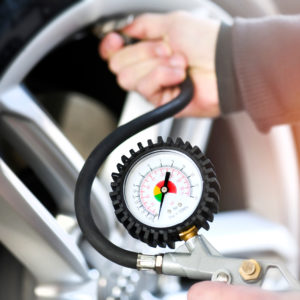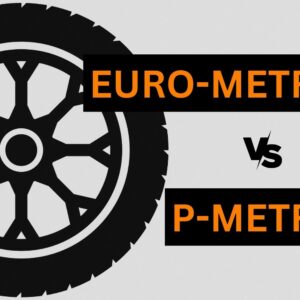Maintaining a vehicle comes with hard decisions and even harder questions, such as: Can you replace just one tire?
While the question seems simple, the answer isn’t as straightforward. There are compelling reasons why you might want to think twice before grabbing a lug wrench and replacing that worn-out or damaged tire.
Can You Replace Just One Tire?
You can’t always replace just one tire, especially if you have an all-wheel drive vehicle. One example of how having different tires can negatively affect your car is the potential risk of damaging the transfer case, front differentials, and other parts.
The tire circumference and size on the same axle should always be similar. There are a handful of other reasons why you shouldn’t.
What Happens if You Just Replace One Tire?
Replacing just one tire isn’t recommended because your car may suffer from less stability, incorrect information, and possible suspension issues. These are all dangerous and shouldn’t be taken lightly because they affect performance and drivability.

Less Stability
Your vehicle’s tires likely have the same tread wear because they’ve traversed the same roads and terrains. Replacing just one causes an imbalance because the newer tire has more tread than the rest. This results in a tread disparity among the four tires, which may result in less stability on the road.
Treads provide grip, and one tire having more than the others could affect the car’s acceleration and deceleration. You’ll likely feel the effect more during inclement weather like heavy rain or snowfall because the roads are much slippier.
It’s dangerous to drive with less stability than usual because you might have less control over your vehicle than usual.
The Tire Might Send Incorrect Information
Cars have a computer that gathers information from different components to notify owners of issues. The tires aren’t an exception. They send data to the computer to alert you if the pressure is dangerously low through the tire pressure monitoring system or TPMS.
Replacing one tire could result in the computer receiving incorrect information. For example, the computer might consider the three older tires to be underinflated compared to the newer tire.
And in newer cars, the speed is calculated based on the wheel speed sensor which can throw the speedometer off if one tire is different.
The incorrect information could cause false alarms, and if you get used to them, you might end up disregarding the actual warnings of low tire pressure from the TPMS. Plus, driving with deflated tires significantly shortens their lifespan.
Possible Suspension System Issues
Your tires support the driveshaft and suspension system, so they must be balanced and properly working.
The driveshaft delivers torque from the transmission to the differential. It’s essentially what makes your car move forward. The suspension system, on the other hand, helps the vehicle handle bumps by absorbing shocks to make for a more comfortable ride.
Replacing just one tire could throw the balance out of whack, resulting in excessive wear to both systems. In short, the car would have trouble handling bumps and turning the wheels.

When Is It Okay to Replace Just One Tire?
Of course, there will be times when you have no choice but to replace just one tire. The two scenarios where it’s okay are during emergencies and if a tire mechanic deems it okay to do so (with their guidance).
During Emergencies
Dealing with flat tires is normal, and it’s one of the only scenarios where it’s okay to replace just one tire. Why wait for a tow truck when you have a spare tire?
Issues that may arise when driving with a flat tire include poor vehicle handling, decreased fuel economy, rim damage, and more.
In addition, you should only use the spare tire for 70 miles or less because it’s not meant to replace the tire. Rather, its job is to help you reach a safe place or auto shop to get the appropriate tire.
If a Mechanic Says It’s Okay
Some manuals indicate if it’s okay to replace just one tire. If your owner’s manual says it’s fine, and a mechanic gives approval, then you have the green light to go ahead and mount a new tire.
However, if you must do so, it’s best to have an expert do the replacement to ensure the new tire fits, and you won’t have any issues moving forward. Additionally, replacing a tire depends on the vehicle type.
If your car is a front or rear-wheel drive, the new tire will be paired with the tire with the deepest tread depth. For four or all-wheel drive vehicles, it’s usually not advised to replace just one tire because it could cause issues in the drivetrain system.
Final Thoughts
It’s rarely okay to replace just one tire. Some negative effects of doing so include less stability, sending incorrect information, and possible suspension system issues. You can do it during emergencies and when the owner’s manual and a mechanic say it’s fine.
Any information provided on this Website is for informational purposes only and is not intended to replace consultation with a professional mechanic. The accuracy and timeliness of the information may change from the time of publication.






























